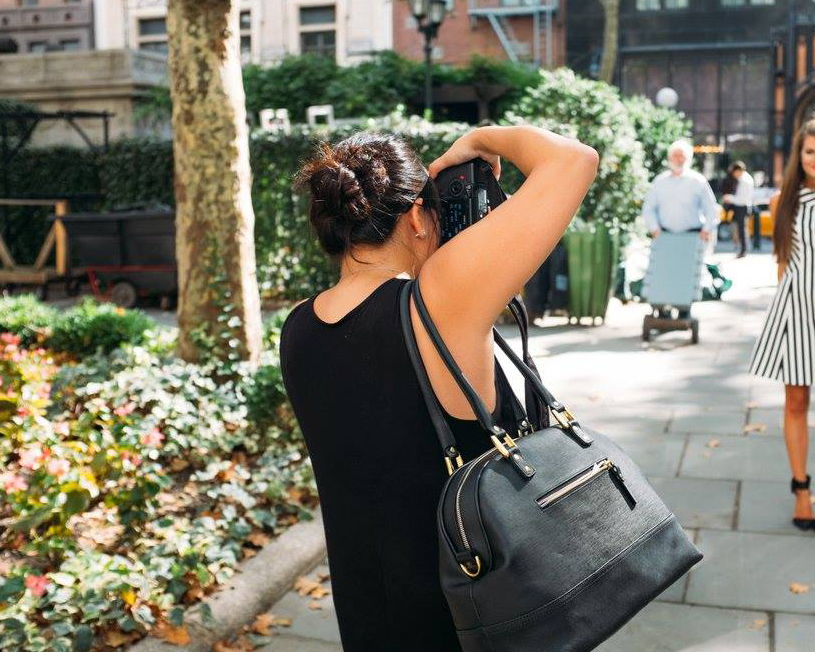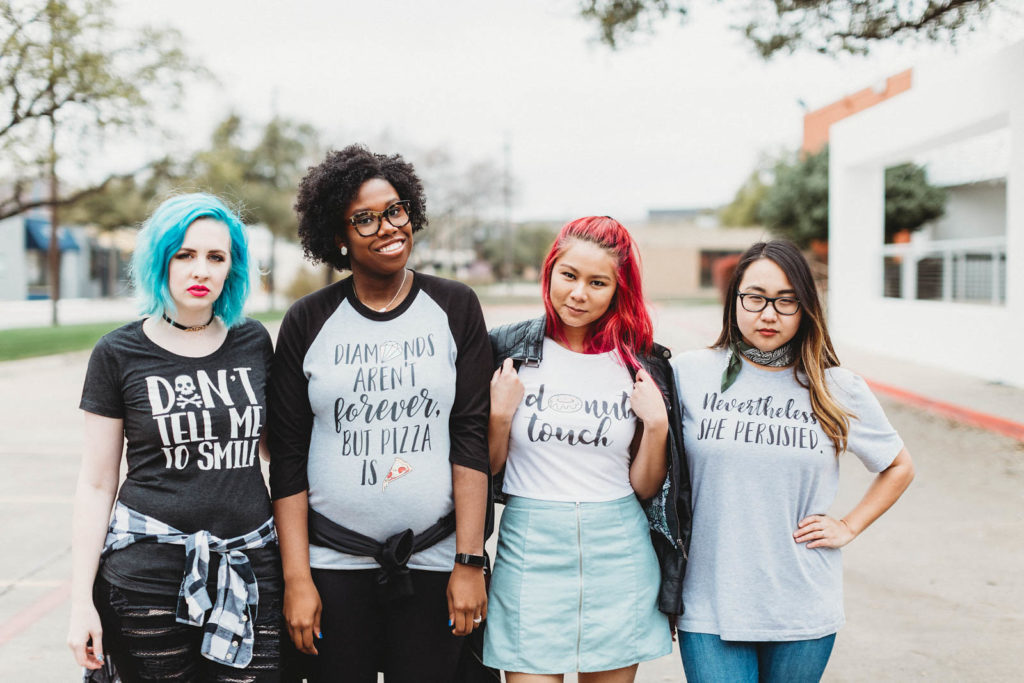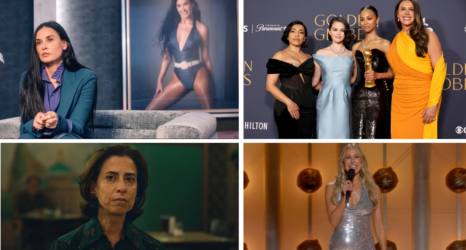Three years ago, I thought I was living the dream.
At the age of 30, I was working in a literal ivory tower. The walls and furniture in my office were mostly stark white, with a few black and gray accents. Every square inch of the space was completely, impeccably Instagrammable—from the fully-stocked bar made of Carrara marble to the bathroom mirror perfectly lit for selfies.
I was working there to provide strategic consulting to some of the most influential bloggers in the industry, which initially appealed to my passion for helping people.
Unfortunately, we all know where roads paved with good intentions often lead.

One Friday morning, when my coworkers and I filed into the office for the weekly retail development meeting, we learned that a popular women’s apparel company had come to us looking for bloggers with “real-life” body types—women wearing sizes 8 to 12.
While the room erupted in nervous laughter—“we don’t have anyone in our portfolio like that,” my colleagues declared—my size 10 jeans pressed tightly against my waistline as I sat cross-legged on the floor.
When people ask me what it was like working at one of the most enigmatic and seemingly-glamorous influencer marketing companies in the industry, my response is typically: “I didn’t fit in.” The discomfort I felt squeezing into that pair of pants was not unlike the constant tension I felt in my conscience while I was there, knowing I was collecting a paycheck from a company (and industry) with a reputation for excluding underrepresented communities.

One of the common ways influencers monetize their follower count on social media is through an affiliate network, which gives them the opportunity to partner with brands for sponsored campaigns. But if the people who have the power to control who is accepted into those networks, or who is introduced to the higher-ups at powerful brands, are not making their choices through an equitable lens, implicit bias can rear its ugly head.
Take a minute today to scroll through the curated feed of any popular Instagram account with more than three million followers and the predominant pattern they follow will instantly become clear. You’ll most likely find a sea of conventionally attractive, white, feminine, fit bloggers featured in designer accessories that cost more than an average consumer’s monthly rent. (Minorities may be sprinkled in selectively, like a pair of brightly-colored statement earrings to complete a monochromatic outfit of the day.)
It’s a familiar stream of social un-consciousness. We’ve seen this kind of homogeneity reign supreme for decades—on runways, in Hollywood, and even in the realms of corporate leadership and politics. And while influencer politics can seem small in the midst of the bigger picture of the fight for progress, the stakes can actually be quite high. Some bloggers make seven-figure salaries this way. Companies have boasted about the $1 billion in retail sales their platforms have created. These earnings, accumulated and compounded over time, can amount to a great deal of wealth and power.
Who is (or is not) invited to the party matters. Even when the party is on Instagram.
Last year, fashion bloggers spoke out about the lack of diversity they found online at an annual invitation-only conference. Some attendees defended the exclusivity, saying the invite list was based solely on performance—and had nothing to do with appearance, race, or gender. They felt that they had earned their place, much like critics of Affirmative Action who argue that is people of color just worked harder, they could be as successful as their white peers. But this reasoning assumes a level playing field when there isn’t one—the racial wealth gap in America continues to widen, and for every $100 in white family wealth held today, black families hold only $5.04.

The investment required to start a blog and run it successfully is not cheap. There are fees for web hosting, computer equipment, internet, buying a domain and either hiring a designer to develop a site or paying for a theme to do it yourself. Attending special events and taking advantage of networking opportunities requires the costs of transportation and childcare. Many bloggers also hire professional photographers on a regular basis to build up a collection of high-quality images to post, and some even have a budget to purchase outfits to wear in the photos.
These initial costs can run anywhere between a few hundred to thousands of dollars. But blogging also takes time—both the years it takes to grow a steady audience and the hours it requires each day to create, publish and promote content.
The majority of top-earning bloggers I worked with on a regular basis in that ivory tower had early advantages that helped catapult their success. Additional rewards and resources, like invites to exclusive conferences, only expanded the chasm in opportunity between people like them and everybody else.
It’s difficult to dream what you can’t see. Visibility matters, and there is a generation of young people growing up in a digital world where they don’t all see themselves reflected on their screens. Accessibility and opportunity matter, too—and that same generation deserves better than a homogenous idea of beauty that excludes and erases them.
Thinking about this never-ending merry-go-round can feel defeating, but we can step off the carousel. We can shift this paradigm—but only if those with power decide to wield it for good. We can use what influence we have to make space for those with less.
Influencers can leverage their voices for impact by joining networks who value diversity and inclusion. They can advance equity by refusing to supporting brands that privilege some people over others.
At the end of the day, they may lose followers—and even money. But creating an equitable world infused with diverse representation is worth the cost.





